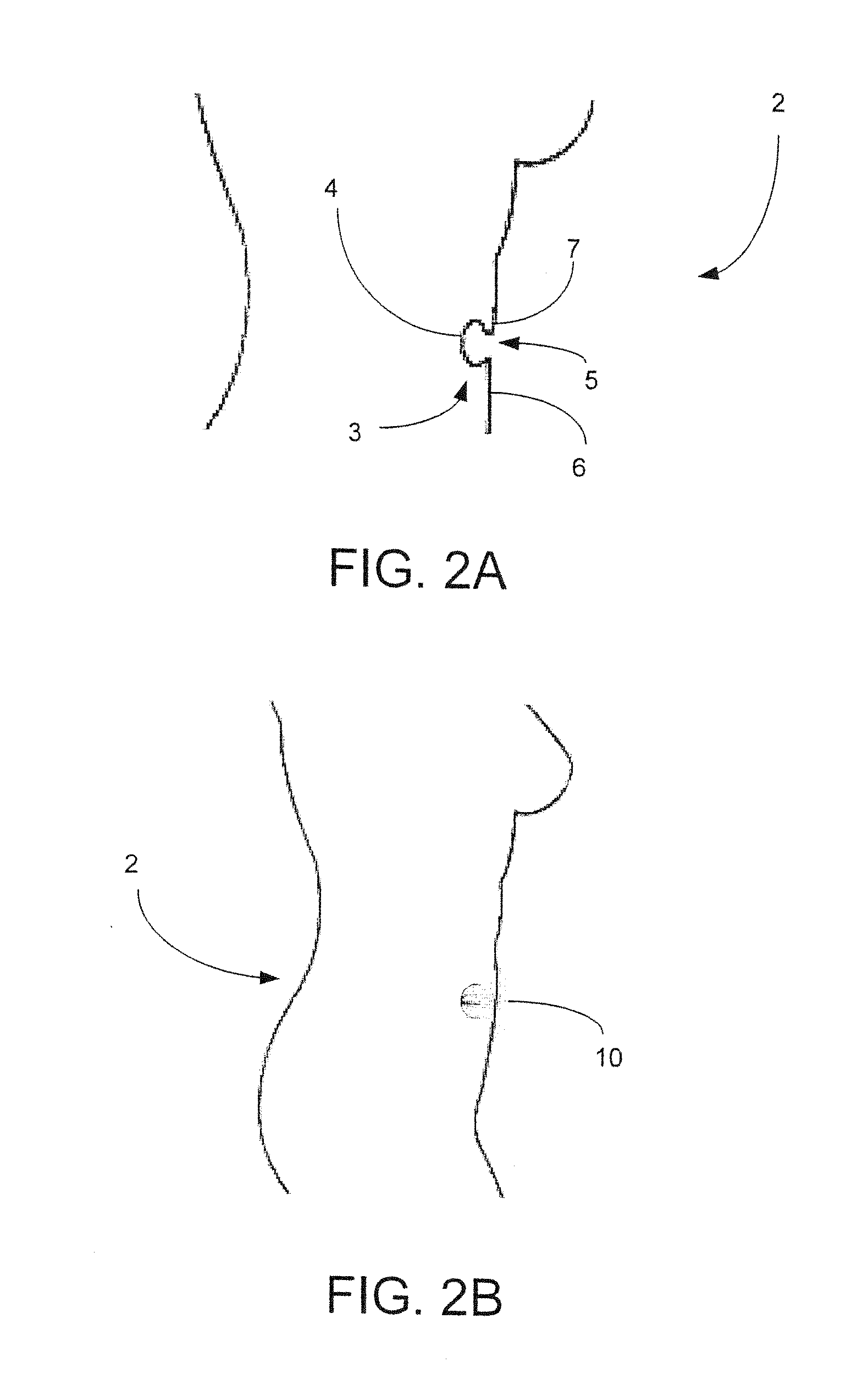Umbilical Splint and Method of Use
a splint and splint technology, applied in the field of splints, can solve the problems of difficult to ensure sterility, difficult to keep marbles in place, and deformities of the umbilicus, and achieve the effects of reducing the formation and/or appearance of scars, reducing the formation of pressure, and reducing the formation of scars
- Summary
- Abstract
- Description
- Claims
- Application Information
AI Technical Summary
Benefits of technology
Problems solved by technology
Method used
Image
Examples
Embodiment Construction
[0042]Referring now to FIG. 1, an umbilical splint 10 is shown in accordance with an embodiment of the present invention. The umbilical splint 10 is configured with an insertion portion 20 terminating at an insertion end 22 and an external flange 40.
[0043]The insertion portion 20 extends in a longitudinal direction LD, shown in dashed lines, for insertion into an umbilicus. The insertion portion 20 includes an insertion end 22, a bulbous section 24 and a retaining section 26. The bulbous section 24 is disposed between the insertion end 22 and the retaining section 26.
[0044]The umbilical splint 10 may also include an external flange 40. The external flange 40 is configured with an external surface 42 and an underside surface 44. The underside surface 44 of the external flange 40 faces the insertion end 22 of the insertion portion 20. The insertion portion 20 and the external flange 40 may be joined at an intersection 28.
[0045]As seen in FIG. 2A, a patient 2 has an umbilicus 3 (i.e. a...
PUM
 Login to View More
Login to View More Abstract
Description
Claims
Application Information
 Login to View More
Login to View More - R&D
- Intellectual Property
- Life Sciences
- Materials
- Tech Scout
- Unparalleled Data Quality
- Higher Quality Content
- 60% Fewer Hallucinations
Browse by: Latest US Patents, China's latest patents, Technical Efficacy Thesaurus, Application Domain, Technology Topic, Popular Technical Reports.
© 2025 PatSnap. All rights reserved.Legal|Privacy policy|Modern Slavery Act Transparency Statement|Sitemap|About US| Contact US: help@patsnap.com



